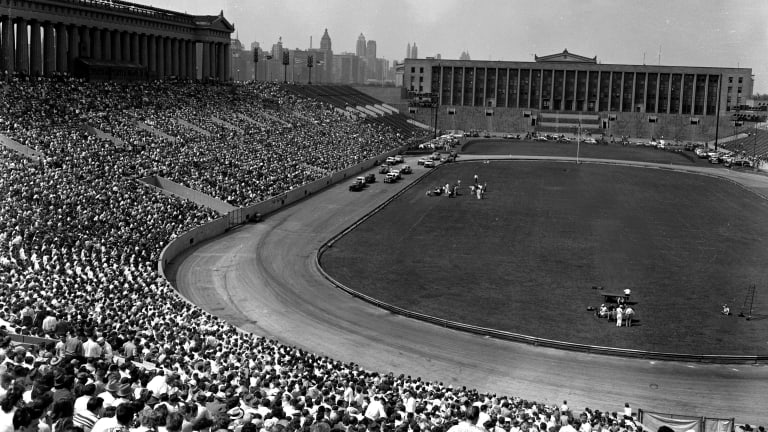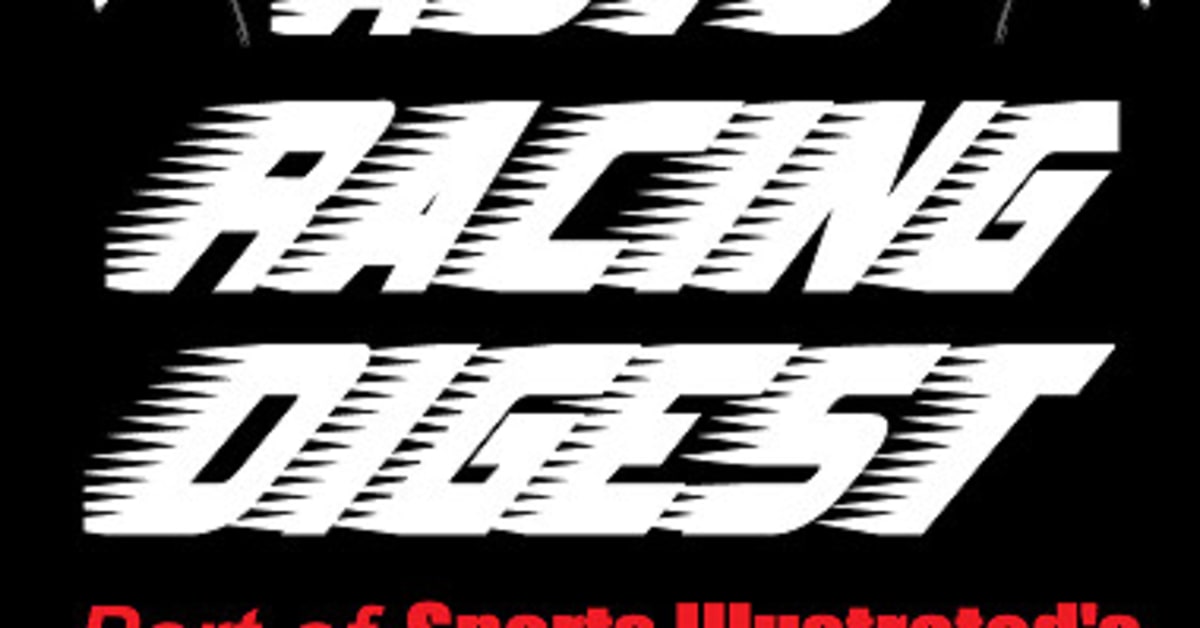
NASCAR race at LA Coliseum brings back memories of stadium racing more than 50 years ago

By Jerry Bonkowski
When NASCAR first announced last September that it was moving the 2022 pre-season Busch Light Clash cross-country, from Daytona Beach to the hallowed infield of the Los Angeles Memorial Coliseum, a lot of people likely said, “Say what?”
To many, running a race on a specially-built, quarter-mile oval track around the outer edges of the Coliseum’s infield – at a reported construction cost of $1 million-plus – was a curiosity, but also questionable.
Why would NASCAR do something like that when – if not, at the very least, in Daytona – it has nearly two dozen other tracks at its disposal? Why not just race at Daytona International Speedway again, as the Clash has done since 1979?
Frankly, though, moving from the East Coast to the West Coast may prove to be a move of genius on the part of NASCAR officials.
It also will be a way to bring back another part of some of NASCAR’s great yet also long-forgotten history, when races back in the 1950s and 1960s were run inside facilities such as New Jersey’s Ascot, Old Bridge and Wal stadiums, Toronto’s Canadian Exposition Stadium, Buffalo’s Civic Stadium, Oakland Stadium, Chicago’s Soldier Field and the quintessential stadium track that is still in use to this very day (mainly for sportsman racing), namely, Bowman Gray Stadium in Winston-Salem, N.C.

How many folks know Chicago's Soldier Field used to be one of the more popular race tracks in the Midwest? Photo: Stan Kalwasinski Collection
Running at LA Memorial Coliseum is a direct corollary of the fact that the NFL Super Bowl is held one week later (February 13) this year than usual, and NASCAR was not going to keep teams in Daytona for two-plus weeks for the February 20 Daytona 500, with one weekend totally dark because of what was happening in Los Angeles for the Super Bowl the week before.
So, in its continuing effort to rebrand itself and attract new fans, coupled with the Super Bowl scheduling quirk, NASCAR seized upon the idea to bring back old-style stadium racing one week before the Super Bowl … and potentially lure thousands of sports fans who may want to leave winter behind and come out to LA a week or so early prior to the NFL's biggest game of the year to enjoy lots of sun and warmer weather, go to the beach, and take in some racing, to boot.
It’s actually a marketing brainstorm on NASCAR’s part.
When I first heard of The Clash being held at the 77,500-seat Coliseum, which celebrates its 99th year of existence this year, my mind quickly flashed back more than 50 years ago when I saw in-person stock car racing held at Soldier Field – and which probably subconsciously planted the seed that would lead to spending much of my adult and professional journalistic life covering motorsports.
Now, let me clarify one thing: NASCAR’s Grand National Series (the predecessor to NASCAR Cup) only raced once at the Windy City’s Soldier Field in 1956, a year before I was born. But there were several other midget and stock car series that competed at the 75,000-seat facility along the western shore of Lake Michigan, dating from 1935 and continued on for 35 more years!
Who knew, right?
The more I heard about this year’s Clash at the Coliseum, my memory bank began to get clearer and clearer – bringing back recollections I hadn’t thought much of for nearly six decades – and I found myself being transported back in time, remembering much of what I saw at the cavernous Soldier Field when I was just six years old in 1964.
Check out what racing was like at Soldier Field (start at 25:30) (video courtesy Stan Kalwasinski):
My father took me to the future home of the Chicago Bears (who would move there from Wrigley Field in 1971) for what was called the Tournament of Thrills racing event. It not only featured racing, it also had an incredible support show that included a demolition derby and a slew of Chicago firefighters dressed up in full clown makeup and clothes (there were a number of firefighters of that era who dressed up as clowns for charity and other such events) who would put Bozo to shame.
And it was all for a good cause, raising money for charity.
I remember seeing some of those firefighters-turned-clowns chasing each other around the race track as well as in the infield, performing hilarious stunts, including using a couple of hook-and-ladder trucks, where they’d go up one ladder and down the other.
But more than anything else, was the racing. The exhaust from the race cars, coupled with all the cigarette smoke from fans in the stands, made it hard for these then-young eyes to see the far north end of the track from our seats in the south end. The smell of the exhaust, burning rubber and the cigs, as well as the roar of the unmuffled engines as they ran around and around the track further exacerbated my senses, leaving my ears ringing – it seemed – for at least the next week. My mother seriously wondered if I was going to join my aunt and uncle, who were both deaf.
Yet after what was three-plus hours of entertainment, yours truly was so thrilled and excited by what he saw that he STILL couldn’t non-stop talking about what he had witnessed, after seemingly talking and oooing and aahing non-stop throughout the three hours of the Thrill show as it was.
Click on "Watch On YouTube" to see the following video to see what stadium racing was like at Chicago's Soldier Field back in the day (video courtesy SpookyTwister):
Sadly, that night would begin the start of the end of stock car racing at Soldier Field, with the last event of its genre coming in 1968, when Sal Tovella took the checkered flag for the final time (although, believe it or not, the last racing event of any type held there was actually a drag race in 1970!).
I know many of you reading this are much younger and likely never knew they actually raced stock cars – let alone drag racing – inside a stadium. Do a little digging, especially on YouTube, and you will be pleasantly surprised to find . But I was there to witness it and somehow, some way, I have to thank venerable Soldier Field for laying the groundwork for what would become a great career covering NASCAR, IndyCar, NHRA and other forms of motorsports throughout my career.
For those of you who will be in attendance at the LA Coliseum on February 6, I hope you come there as I did to Soldier Field for the first time ever in my life: with an open mind, to experience something that may be a once-in-a-lifetime adventure. And, who knows, maybe it will inspire another young ‘un to eventually make motorsports racing or reporting his or her life’s work.
If this year’s Clash is a sellout and total success – and I truly hope it will be on both accounts -- it also may be the final coaxing that I’ve long hoped for NASCAR to try and pull off. After all, if the sanctioning body can bring back stadium racing in 2022, maybe that can convince NASCAR’s top officials to see stock car racing come full circle and return to its original roots of racing on the beach in and around Daytona?
Even the Super Bowl wouldn’t stand a chance up against something like that.
Follow Auto Racing Digest editor Jerry Bonkowski on Twitter @JerryBonkowski and Auto Racing Digest on Twitter @AutoRaceDigest.